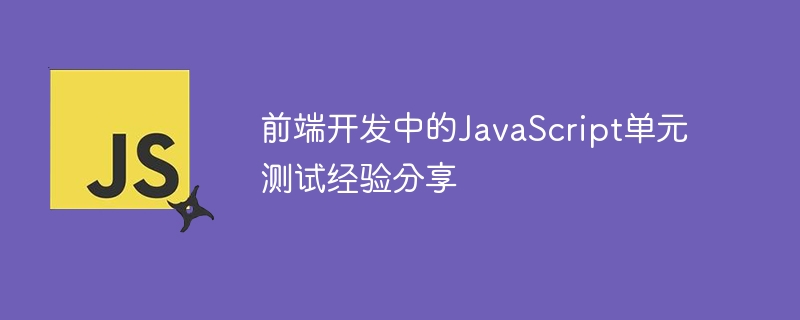

Sharing JavaScript unit testing experience in front-end development
Introduction:
With the rapid development of the Internet, front-end development is becoming more and more important. As one of the core languages of front-end development, JavaScript plays a role that cannot be ignored. In order to ensure the quality and stability of the front-end code, unit testing is an indispensable part. In this article, we will share some experiences and techniques for JavaScript unit testing in front-end development.
Overview:
In front-end development, the amount of JavaScript code is usually large, and the various functions are intertwined and complex. Therefore, manual testing alone is far from enough. The purpose of JavaScript unit testing is to test the code through automated methods to ensure the correctness, stability and maintainability of the code, thereby improving development efficiency and code quality.
Choose a suitable testing framework:
Choosing a suitable testing framework is the first step in JavaScript unit testing. Currently, the more popular testing frameworks include Mocha, Jest, Jasmine, etc. These frameworks provide rich functions and easy-to-use interfaces, which can meet most testing needs. Choosing a testing framework suitable for the project can greatly improve the efficiency and maintainability of testing.
Write testable code:
In order to facilitate unit testing, we need to write testable code. Testable code should have the following characteristics:
Writing test cases:
Writing test cases is the core work of unit testing. A good test case should have the following characteristics:
Use the assertion library:
The assertion library is a tool used to judge test results. Common ones include chai, expect, etc. Using an assertion library can make test cases more readable and maintainable.
Continuous integration and code coverage:
In order to ensure code quality, we can integrate unit testing in the continuous integration system and evaluate test coverage through code coverage tools. Continuous integration can help us discover code problems in time and improve development efficiency and code quality.
Summary:
JavaScript unit testing is a key part of ensuring the quality and stability of front-end code. Choosing an appropriate testing framework, writing testable code, writing good test cases, using assertion libraries, continuous integration, and code coverage evaluation are all key steps and techniques for JavaScript unit testing. Through good unit testing, the quality and stability of front-end development can be guaranteed, and development efficiency and code quality can be improved.
The above is some experience sharing on JavaScript unit testing in front-end development. I hope it will be helpful to readers. Through continuous learning and practice, constantly improving your unit testing level in front-end development will play a more important role in project development.
The above is the detailed content of JavaScript unit testing experience sharing in front-end development. For more information, please follow other related articles on the PHP Chinese website!